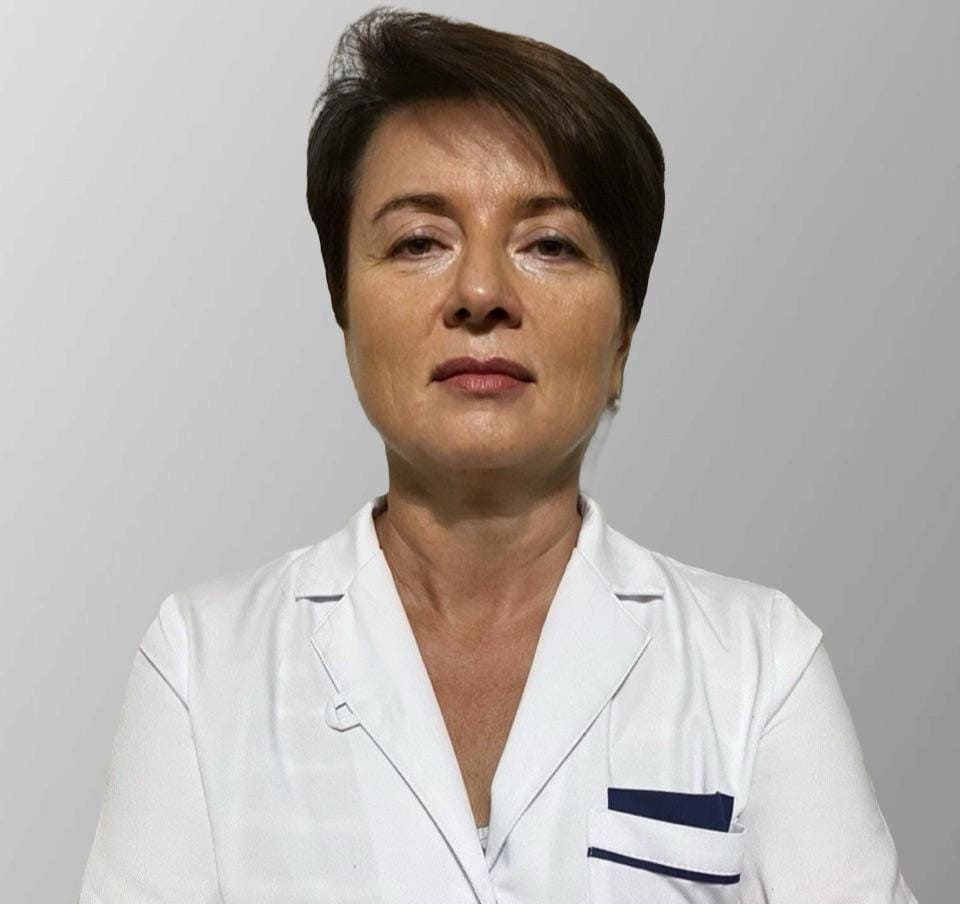
VALSARTAN VIATRIS 160 mg COMPRIMIDOS REVESTIDOS POR PELÍCULA
Pergunte a um médico sobre a prescrição de VALSARTAN VIATRIS 160 mg COMPRIMIDOS REVESTIDOS POR PELÍCULA

Como usar VALSARTAN VIATRIS 160 mg COMPRIMIDOS REVESTIDOS POR PELÍCULA
Introdução
Prospecto: informação para o paciente
Valsartão Viatris 160 mg comprimidos revestidos com película EFG
Leia todo o prospecto atentamente antes de começar a tomar este medicamento, porque contém informações importantes para si.
- Conserva este prospecto, porque pode ter que voltar a lê-lo.
- Se tiver alguma dúvida, consulte o seu médico ou farmacêutico.
- Este medicamento foi prescrito apenas para si e não deve dá-lo a outras pessoas, mesmo que apresentem os mesmos sintomas da doença, porque pode prejudicá-las.
- Se experimentar efeitos adversos, consulte o seu médico ou farmacêutico, mesmo que se trate de efeitos adversos que não aparecem neste prospecto. Ver seção 4.
Conteúdo do prospecto
- O que é Valsartão Viatris e para que é utilizado
- O que precisa saber antes de começar a tomar Valsartão Viatris
- Como tomar Valsartão Viatris
- Posíveis efeitos adversos
- Conservação de Valsartão Viatris
- Conteúdo do envase e informação adicional
1. O que é Valsartão Viatris e para que é utilizado
Valsartão Viatris pertence a uma classe de medicamentos conhecidos como antagonistas dos receptores da angiotensina II, que ajudam a controlar a pressão arterial alta. A angiotensina II é uma substância do corpo que faz com que os vasos sanguíneos se estreitem, causando um aumento da pressão arterial. Valsartão Viatris actua bloqueando o efeito da angiotensina II. Como consequência, os vasos sanguíneos relaxam e a pressão arterial diminui.
Valsartão Viatris comprimidos revestidos com película podem ser utilizados para três afeções diferentes:
- Para tratar a pressão arterial alta em adultos e em crianças e adolescentes de 6 a menos de 18 anos.A pressão arterial alta aumenta a carga de trabalho do coração e das artérias. Se não for tratada, pode danificar os vasos sanguíneos do cérebro, coração e rins, e pode provocar um acidente vascular cerebral, insuficiência cardíaca ou insuficiência renal. A pressão arterial alta aumenta o risco de ataques cardíacos. A diminuição da pressão arterial para valores normais reduz o risco de desenvolver estes distúrbios.
- Para tratar pacientes adultos após um ataque cardíaco recente(infarto do miocárdio). “Recente” significa aqui entre 12 horas e 10 dias.
- Para tratar a insuficiência cardíaca sintomática em pacientes adultos.Valsartão Viatris é utilizado quando não se pode utilizar um grupo de medicamentos chamados inibidores da Enzima Conversora de Angiotensina (ECA) (uma medicação para tratar a insuficiência cardíaca) ou pode ser utilizado junto com inibidores da ECA quando não se podem usar outros medicamentos para tratar a insuficiência cardíaca.
Entre os sintomas da insuficiência cardíaca figuram a dificuldade para respirar e a inchação de pés e pernas por retenção de líquidos. Deve-se ao facto de o músculo cardíaco não poder bombear o sangue com suficiente força para fornecer todo o sangue necessário para o corpo.
2. O que precisa saber antes de começar a tomar Valsartão Viatris
Não tome ValsartãoViatris
- Se é alérgicoa valsartão ou a qualquer um dos outros componentes deste medicamento (incluídos na seção 6).
- Se sofre uma doença grave do fígado.
- Se está grávida de mais de 3 meses(é melhor evitar também Valsartão Viatris durante os primeiros meses da gravidez – ver seção Gravidez).
- Se tem diabetes ou insuficiência renal e está a ser tratado com um medicamento para baixar a pressão arterial que contém alisquirén.
Se alguma destas situações o afeta, não tome ValsartãoViatris.
Advertências e precauções
Consulte o seu médico ou farmacêutico antes de começar a tomar Valsartão Viatris
- Se sofre uma doença do fígado.
- Se sofre uma doença grave dos rins ou se está a ser submetido a diálise.
- Se sofre um estreitamento da artéria do rim.
- Se foi submetido recentemente a um transplante de rim (recebeu um rim novo).
- Se está a ser tratado de um ataque cardíaco ou de insuficiência cardíaca, o seu médico pode verificar a função renal.
- Se sofre uma doença cardíaca grave diferente da insuficiência cardíaca ou do ataque cardíaco.
- Se está a utilizar medicamentos que aumentam a quantidade de potássio no sangue. Entre eles figuram os suplementos de potássio ou substitutos de sal que contêm potássio, os medicamentos poupadores de potássio e a heparina. Pode ser necessário controlar regularmente a quantidade de potássio no sangue.
- Se tem menos de 18 anos e toma Valsartão Viatris junto com outros medicamentos que inibem o sistema renina angiotensina aldosterona (medicamentos que baixam a pressão arterial), o seu médico pode controlar periodicamente a função renal e a quantidade de potássio do sangue.
- Se sofre aldosteronismo, uma doença em que as glândulas supra-renais produzem demasiada hormona aldosterona. Neste caso, não se recomenda tomar Valsartão Viatris.
- Se perdeu muito líquido (desidratação) devido a uma diarreia, vómitos ou doses elevadas de diuréticos (medicamentos para aumentar a eliminação de urina).
- Informe o seu médico se está grávida (ou se suspeita que possa estar grávida). Não se recomenda utilizar Valsartão Viatris no início da gravidez e em nenhum caso deve ser administrado se está grávida de mais de três meses, porque pode causar danos graves ao seu bebé quando é administrado a partir desse momento (ver seção gravidez).
- Se alguma vez experimentou inchação da língua e da face causada por uma reação alérgica chamada angioedema ao tomar outro medicamento (incluídos os inibidores da ECA), informe o seu médico. Se apresentar estes sintomas quando estiver a tomar Valsartão Viatris, deixe de tomar Valsartão Viatris imediatamente e não volte a tomar nunca. Ver também a seção 4 “Posíveis efeitos adversos”.
- Se está a tomar algum dos seguintes medicamentos utilizados para tratar a pressão arterial alta (hipertensão):
- Um inibidor da enzima conversora de angiotensina (IECA) (por exemplo, enalapril, lisinopril, ramipril), em particular se sofre problemas renais relacionados com a diabetes.
- Alisquirén.
- Se está em tratamento com um inibidor da ECA junto com outros medicamentos para tratar a insuficiência cardíaca, conhecidos como antagonistas dos receptores de mineralocorticoides (ARM) (por exemplo, espironolactona, eplerenona) ou betabloqueantes (por exemplo, metoprolol).
Consulte o seu médico se apresentar dor abdominal, náuseas, vómitos ou diarreia após tomar valsartão. O seu médico decidirá se continuar com o tratamento. Não deixe de tomar valsartão por sua conta.
Pode ser que o seu médico precise verificar a função renal, a pressão arterial e os níveis de eletrólitos no sangue (por exemplo, potássio) a intervalos regulares.
Ver também a informação sob o título “Não tome Valsartão Viatris”.
Os pacientes podem perceber que este medicamento tem um cheiro e/ou sabor invulgar. Isto é normal e característico do princípio ativo valsartão.
Se alguma destas situações o afeta, informe o seu médico antes de tomar ValsartãoViatris.
Outros medicamentos eValsartãoViatris
Comunique ao seu médico ou farmacêutico se está a tomar, tomou recentemente ou pode ter que tomar qualquer outro medicamento.
O efeito do tratamento com Valsartão Viatris pode ser alterado se for tomado com certos medicamentos. Pode ser necessário mudar a dose, tomar outras precauções ou, em alguns casos, interromper o tratamento de algum dos medicamentos. Isto é aplicável tanto a medicamentos adquiridos com receita como sem receita, especialmente:
- Outros medicamentos que diminuem a pressão arterial,especialmente diuréticos(medicamentos para aumentar a eliminação de urina).
- Medicamentos que aumentam a quantidade de potássiono sangue. Entre eles figuram os suplementos de potássio ou substitutos de sal que contêm potássio, os medicamentos poupadores de potássio e a heparina.
- Certos medicamentos para tratar a dorchamados anti-inflamatórios não esteroideos (AINEs).
- Lítio,um medicamento utilizado para tratar certos tipos de doenças psiquiátricas.
- Alguns antibióticos (grupo de rifampicina), um medicamento que se usa para proteger contra o rejeição de transplantes (ciclosporina) ou um medicamento antirretroviral utilizado para tratar a infecção por VIH/SIDA (ritonavir). Estes medicamentos podem aumentar o efeito de Valsartão Viatris.
Além disso:
- Se está a ser tratado após um ataque cardíaco,não se recomenda a combinação com inibidores da ECA(uma medicação para tratar um ataque cardíaco).
- Se está a ser tratado para a insuficiência cardíaca,não se recomenda a tríplice combinação com inibidores da ECA e betabloqueantes(uma medicação para tratar a insuficiência cardíaca).
Pode ser que o seu médico precise modificar a dose e/ou tomar outras precauções:
- Se está a tomar um inibidor da enzima conversora de angiotensina (IECA) ou alisquirén (ver também a informação sob os títulos “Não tome Valsartão Viatris” e “Advertências e precauções”).
- Se está em tratamento com um inibidor da ECA junto com outros medicamentos para tratar a insuficiência cardíaca, conhecidos como antagonistas dos receptores de mineralocorticoides (ARM) (por exemplo, espironolactona, eplerenona) ou betabloqueantes (por exemplo, metoprolol).
Gravidez e amamentação
Se está grávida ou em período de amamentação, acredita que possa estar grávida ou tem intenção de engravidar, consulte o seu médico ou farmacêutico antes de tomar este medicamento.
- Informe o seu médico se pensa que está (ou pode estar) grávida.O seu médico geralmente lhe recomendará que deixe de tomar Valsartão Viatris antes de engravidar ou tão pronto quanto saiba que está grávida e lhe recomendará que tome outro medicamento em lugar de Valsartão Viatris. Não se recomenda utilizar Valsartão Viatris no início da gravidez, e em nenhum caso deve ser administrado a partir do terceiro mês de gravidez, porque pode causar danos graves ao seu bebé quando é administrado a partir desse momento.
- Informe o seu médico se está em período de amamentação ou vai começar com o mesmo. Não se recomenda o uso de Valsartão Viatris durante a amamentação materna, e o seu médico escolherá outro tratamento para si se desejar amamentar, especialmente se o seu bebé é recém-nascido ou prematuro.
Condução e uso de máquinas
Antes de conduzir um veículo, usar ferramentas ou manejar máquinas, ou realizar outras atividades que requeiram concentração, certifique-se de conhecer como lhe afeta Valsartão Viatris. Como muitos outros medicamentos utilizados para tratar a pressão arterial alta, Valsartão Viatris pode causar, em raros casos, tonturas e afetar a capacidade de concentração.
Valsartão Viatris contém sódio
Este medicamento contém menos de 23 mg (1 mmol) de sódio por dose, pelo que se considera essencialmente “isento de sódio”.
3. Como tomar Valsartão Viatris
Para obter os melhores resultados e reduzir o risco de efeitos adversos, siga exactamente as instruções de administração deste medicamento indicadas pelo seu médico ou farmacêutico. Em caso de dúvida, consulte de novo o seu médico ou farmacêutico. As pessoas com pressão arterial alta não notam muitas vezes nenhum sinal da doença; muitas se sentem de forma normal. Isto faz com que seja muito importante acudir às suas consultas com o médico, mesmo que se sinta bem.
Pacientes adultos com pressão arterial alta:a dose habitual é de 80 mg por dia. Em alguns casos o seu médico pode prescrever doses mais elevadas (p. ex. 160 mg ou 320 mg). Também pode combinar Valsartão Viatris com outro medicamento (p. ex. um diurético).
Uso em crianças e adolescentes (6 a menos de 18 anos) com pressão arterial alta:em pacientes que pesam menos de 35 kg a dose recomendada é de 40 mg de valsartão uma vez por dia. Em pacientes que pesam 35 kg ou mais a dose habitual de início é de 80 mg de valsartão uma vez por dia. Em alguns casos o seu médico pode prescrever doses mais elevadas (a dose pode aumentar para 160 mg e até um máximo de 320 mg).
Em crianças que tenham dificuldade em engolir os comprimidos, recomenda-se a administração de valsartão solução oral.
Pacientes adultos após um ataque cardíaco recente:após um ataque cardíaco o tratamento começa geralmente às 12 horas, normalmente, com uma dose baixa de 20 mg, administrada duas vezes por dia. A dose de 20 mg é obtida dividindo o comprimido de 40 mg. O seu médico aumentará esta dose gradualmente ao longo de várias semanas até um máximo de 160 mg duas vezes por dia. A dose final dependerá da sua tolerância particular.
Valsartão Viatris pode ser administrado com outros tratamentos para o ataque cardíaco e o seu médico decidirá que tratamento é adequado para si.
Pacientes adultos com insuficiência cardíaca:o tratamento começa geralmente com 40 mg duas vezes por dia. O seu médico aumentará a dose gradualmente ao longo de várias semanas até um máximo de 160 mg duas vezes por dia. A dose final dependerá da sua tolerância particular.
Valsartão Viatris pode ser administrado com outros tratamentos para a insuficiência cardíaca e o seu médico decidirá que tratamento é adequado para si.
Pode tomar Valsartão Viatris com ou sem alimentos. Engula Valsartão Viatris com um copo de água.
Tome Valsartão Viatris aproximadamente à mesma hora todos os dias.
O comprimido pode ser dividido em doses iguais.
Se tomar mais ValsartãoViatrisdo que deve
Se nota um forte tontura e/ou desmaio, contacte o seu médico imediatamente e deite-se.
Em caso de sobredose ou ingestão acidental, contacte o seu médico ou farmacêutico, ou ligue para o Serviço de Informação Toxicológica, telefone 91 562 04 20, indicando o medicamento e a quantidade ingerida. Leve consigo o envase e os comprimidos restantes.
Se esqueceu de tomar ValsartãoViatris
Tente tomar Valsartão Viatris diariamente como lhe foi prescrito. No entanto, se esqueceu de uma dose, nãotome uma dose dupla para compensar as doses esquecidas. Simplesmente volte ao seu programa habitual.
Se interromper o tratamento com ValsartãoViatris
Se deixar o tratamento com Valsartão Viatris a sua doença pode piorar. Não deixe de tomar o medicamento a menos que o seu médico o indique.
Se tiver alguma outra dúvida sobre o uso deste medicamento, pergunte ao seu médico ou farmacêutico.
4. Possíveis efeitos adversos
Tal como todos os medicamentos, este medicamento pode produzir efeitos adversos, embora nem todas as pessoas os sofram.
Deixe de tomar este medicamento e consulte o seu médico ou visite o serviço de urgências do hospital mais próximo se experimentar algum dos seguintes efeitos adversos:
Pouco frequentes(podem afetar até 1 em cada 100 pessoas)
- Angioedema (uma reação alérgica específica) com sintomas, tais como:
- Inchaço no rosto, lábios, língua ou garganta.
- Dificuldade para respirar ou engolir.
- Urticária, picazón.
- Falta de ar, dificuldade para respirar quando está deitado, inchaço dos pés ou pernas (sinais de insuficiência cardíaca).
Frequência desconhecida(não pode ser estimada a partir dos dados disponíveis)
- Ampolas severas na pele. (dermatite ampollosa).
Outros efeitos adversos:
Frequentes(podem afetar até 1 em cada 10 pessoas)
- Tontura.
- Pressão arterial baixa, com ou sem sintomas, como tontura e desmaio ao levantar-se.
- Redução da função renal (sinais de deterioração renal).
Pouco frequentes(podem afetar até 1 em cada 100 pessoas)
- Perda súbita da consciência (síncope).
- Sensação de rotação (vertigem).
- Redução acentuada da função renal (sinais de insuficiência renal aguda).
- Espasmos musculares, ritmo cardíaco anormal (sinais de hiperpotasemia).
- Dor de cabeça.
- Tosse.
- Dor abdominal.
- Náuseas.
- Diarréia.
- Cansaço.
- Debilidade.
Muito raros(podem afetar até 1 em cada 10.000 pessoas)
- Angioedema intestinal: inchaço no intestino que apresenta sintomas como dor abdominal, náuseas, vómitos e diarreia.
Frequência desconhecida(não pode ser estimada a partir dos dados disponíveis)
- Reações alérgicas com erupção cutânea, picazón e urticária; sintomas de febre, inchaço e dor nas articulações, dor muscular, inchaço dos gânglios linfáticos e/ou sintomas semelhantes aos da gripe (sinais de doença do soro).
- Manchas vermelhas purpúreas, febre, picazón (sinais de inflamação dos vasos sanguíneos, também chamada vasculite).
- Hemorragia ou contusões mais frequentes do que o habitual (sinais de trombocitopenia).
- Dor muscular (mialgia).
- Febre, dor de garganta ou úlceras na boca por infecções (sintomas de baixo nível de glóbulos brancos, também chamado neutropenia).
- Redução do nível de hemoglobina e redução do percentual de glóbulos vermelhos no sangue (que, em casos graves, pode causar anemia).
- Aumento do nível de potássio no sangue (que, em casos graves, pode provocar espasmos musculares e um ritmo cardíaco anormal).
- Elevação dos valores da função hepática (que pode indicar lesão hepática), incluindo um aumento do nível de bilirrubina no sangue (que, em casos graves, pode provocar que a pele e os olhos fiquem amarelos).
- Aumento do nível de nitrogênio ureico no sangue e aumento do nível de creatinina sérica (que podem indicar anomalias da função renal).
- Baixo nível de sódio no sangue (que pode provocar cansaço, confusão, espasmos musculares e/ou convulsões em casos severos).
A frequência de alguns efeitos adversos pode variar em função do seu estado. Por exemplo, certos efeitos adversos como a tontura e a redução da função renal foram observados com menos frequência em pacientes adultos tratados com pressão arterial alta do que em pacientes adultos tratados por insuficiência cardíaca ou após um ataque cardíaco recente.
Os efeitos adversos em crianças e adolescentes são semelhantes aos observados em adultos.
Comunicação de efeitos adversos:
Se experimentar algum tipo de efeito adverso, consulte o seu médico ou farmacêutico, mesmo que se trate de possíveis efeitos adversos que não aparecem neste prospecto. Também pode comunicá-los diretamente através do Sistema Espanhol de Farmacovigilância de Medicamentos de Uso Humano: https://www.notificaram.es. Mediante a comunicação de efeitos adversos, você pode contribuir para fornecer mais informações sobre a segurança deste medicamento.
5. Conservação de Valsartán Viatris
Mantenha este medicamento fora da vista e do alcance das crianças.
Não utilize este medicamento após a data de validade que aparece na caixa após CAD ou EXP. A data de validade é o último dia do mês que se indica.
Este medicamento não requer condições especiais de conservação.
Não utilize este medicamento se observar que o envase está danificado ou mostra sinais de manipulação.
Os medicamentos não devem ser jogados nos deságues nem na lixeira. Deposite os envases e os medicamentos que não precisa no Ponto SIGRE da farmácia. Em caso de dúvida, pergunte ao seu farmacêutico como se livrar dos envases e dos medicamentos que não precisa. Dessa forma, você ajudará a proteger o meio ambiente.
6. Conteúdo do envase e informação adicional
Composição de Valsartán Viatris
O princípio ativo é valsartán. Cada comprimido contém 160 mg de valsartán.
Os demais componentes são: celulose microcristalina, crospovidona, povidona, croscarmelosa sódica, sílica coloidal anidra, estearato de magnésio.
O recobrimento inclui hipromelosa (E-464), dióxido de titânio (E-171), macrogol, vainillina, óxido de ferro amarelo (E-172), óxido de ferro preto (E-172) e óxido de ferro vermelho (E-172).
Aspecto do produto e conteúdo do envase
Valsartán Viatris 160 mg comprimidos revestidos com película são de cor amarela/amarcela, ovais, biconvexos, biselados, marcados com a inscrição “M” no lado esquerdo da ranhura em um lado e “VN 3” no outro lado do comprimido.
A ranhura serve para dividir o comprimido em duas doses iguais.
Valsartán Viatris comprimidos são dispensados em blisters de 7, 10, 14, 28, 30, 56, 90, 98, 100 comprimidos, em um envase múltiplo de 98 comprimidos que compreende 2 estuches (cada um contém 49 comprimidos), em frascos de HDPE que contêm 56, 98, 500 e 1000 comprimidos e frascos de HDPE com dessecante que contêm 28, 30 comprimidos.
Pode ser que apenas alguns tamanhos de envases sejam comercializados.
Titular da autorização de comercialização
Viatris Limited
Damastown Industrial Park
Mulhuddart, Dublín 15
Dublín
Irlanda
Responsáveis pela fabricação
McDermott Laboratories Limited trading as Gerard Laboratories
35/36 Baldoyle Industrial Estate
Grange Road, Dublin 13
Irlanda
ou
Mylan Hungary Kft.
H-2900 Komárom
Mylan utca 1
Hungria
ou
Mylan Germany GmbH
Zweigniederlassung Bad Homburg Benzstrasse 1
61352 Bad Homburg v. d. Höhe
Alemanha
Podem solicitar mais informações sobre este medicamento dirigindo-se ao representante local do titular da autorização de comercialização:
Viatris Pharmaceuticals, S.L.U.
C/ General Aranaz, 86
28027 - Madrid
Espanha
Este medicamento está autorizado nos Estados-Membros do Espaço Económico Europeue no Reino Unido (Irlanda do Norte)com os seguintes nomes:
AlemanhaValsartan dura 160 mg Filmtabletten
EspanhaValsartán Viatris 160 mg comprimidos revestidos com película EFG
FrançaValsartan Viatris 160 mg, comprimé pelliculé sécable
IrlandaValsartan Viatris 160 mg
ItáliaValsartan Mylan Generics 160 mg
Países BaixosValsartan Viatris 160 mg filmomhulde tabletten
PortugalValsartan Mylan
Reino Unido(Irlanda do Norte)Valsartan Film-coated Tablets 160 mg
Data da última revisão deste prospecto:janeiro 2025
A informação detalhada sobre este medicamento está disponível na página web da Agência Espanhola de Medicamentos e Produtos Sanitários (AEMPS) https://www.aemps.gob.es/

Quanto custa o VALSARTAN VIATRIS 160 mg COMPRIMIDOS REVESTIDOS POR PELÍCULA em Espanha em 2025?
O preço médio do VALSARTAN VIATRIS 160 mg COMPRIMIDOS REVESTIDOS POR PELÍCULA em dezembro de 2025 é de cerca de 16.3 EUR. Os valores podem variar consoante a região, a farmácia e a necessidade de receita. Confirme sempre com uma farmácia local ou fonte online para obter informações atualizadas.
- País de registo
- Preço médio em farmácia16.3 EUR
- Substância ativa
- Requer receita médicaSim
- Fabricante
- Esta informação é apenas para referência e não constitui aconselhamento médico. Consulte sempre um médico antes de tomar qualquer medicamento. A Oladoctor não se responsabiliza por decisões médicas baseadas neste conteúdo.
- Alternativas a VALSARTAN VIATRIS 160 mg COMPRIMIDOS REVESTIDOS POR PELÍCULAForma farmacêutica: COMPRIMIDO, 160 mg valsartanSubstância ativa: valsartanFabricante: Novartis Farmaceutica S.A.Requer receita médicaForma farmacêutica: COMPRIMIDO, 320 mgSubstância ativa: valsartanFabricante: Novartis Farmaceutica S.A.Requer receita médicaForma farmacêutica: SOLUÇÃO/SUSPENSÃO ORAL, 3 mg/mlSubstância ativa: valsartanFabricante: Novartis Farmaceutica S.A.Requer receita médica
Alternativas a VALSARTAN VIATRIS 160 mg COMPRIMIDOS REVESTIDOS POR PELÍCULA noutros países
As melhores alternativas com o mesmo princípio ativo e efeito terapêutico.
Alternativa a VALSARTAN VIATRIS 160 mg COMPRIMIDOS REVESTIDOS POR PELÍCULA em Polónia
Alternativa a VALSARTAN VIATRIS 160 mg COMPRIMIDOS REVESTIDOS POR PELÍCULA em Ukraine
Médicos online para VALSARTAN VIATRIS 160 mg COMPRIMIDOS REVESTIDOS POR PELÍCULA
Avaliação de posologia, efeitos secundários, interações, contraindicações e renovação da receita de VALSARTAN VIATRIS 160 mg COMPRIMIDOS REVESTIDOS POR PELÍCULA – sujeita a avaliação médica e regras locais.










